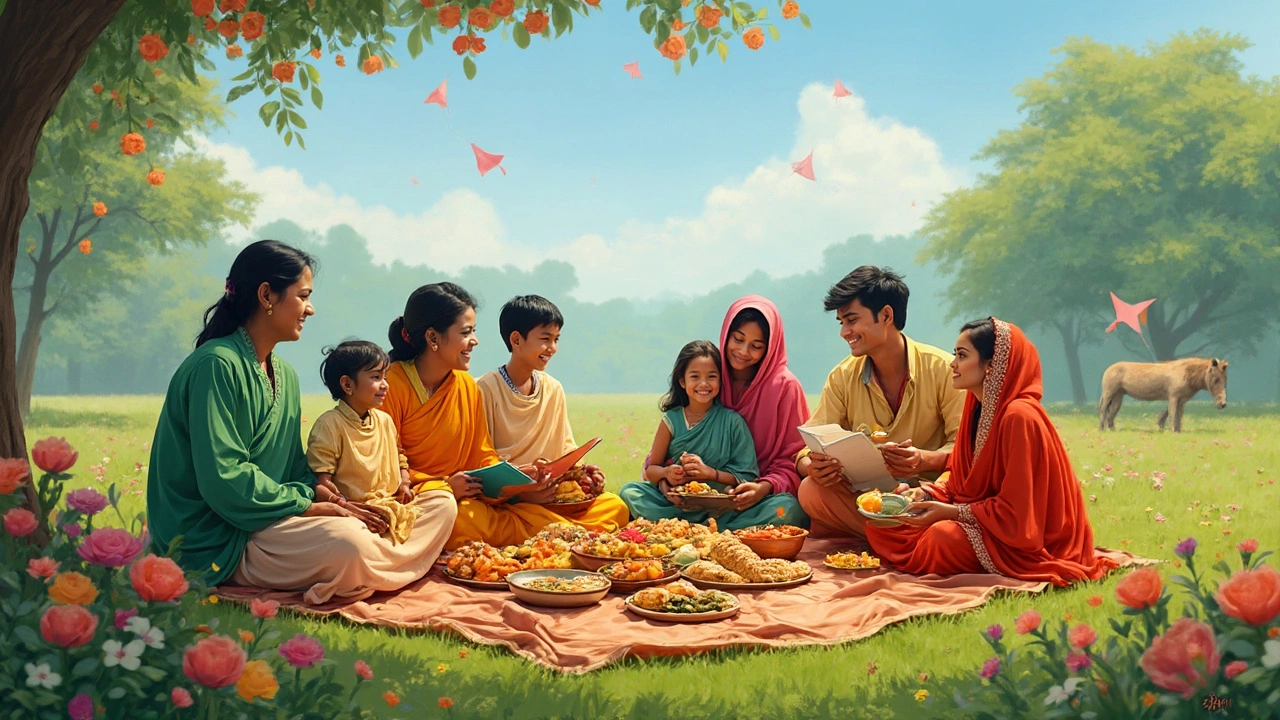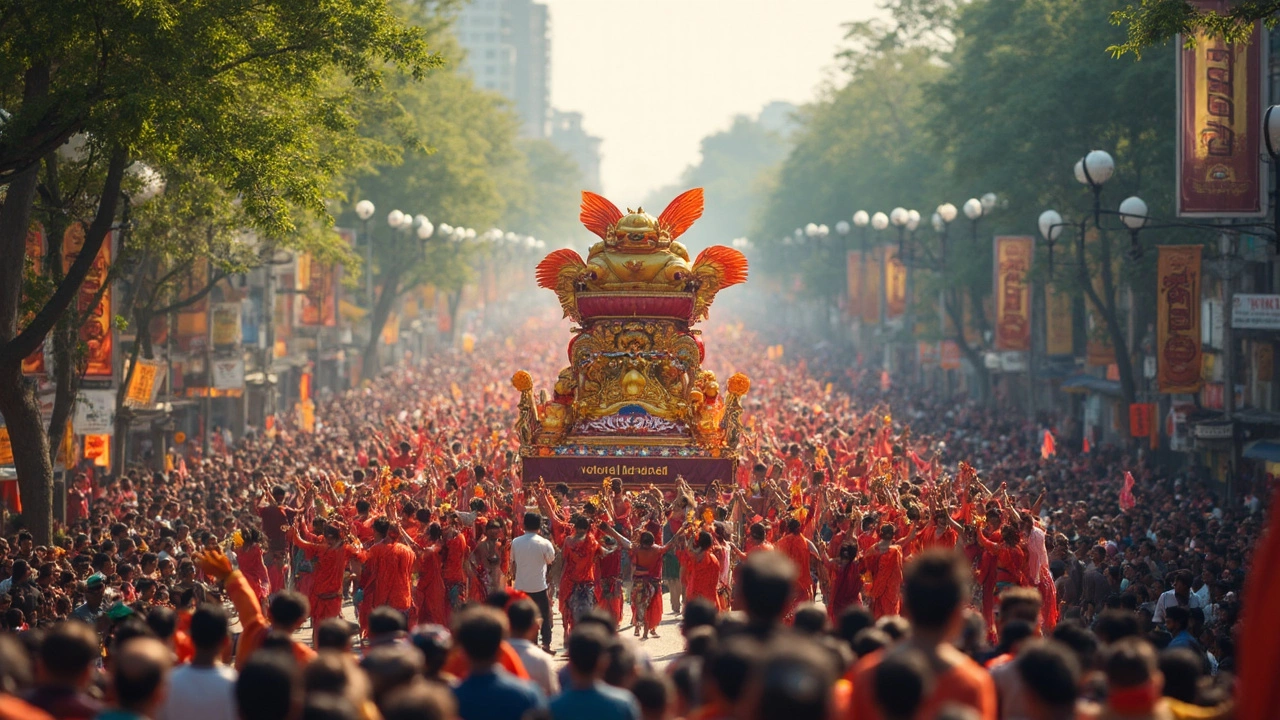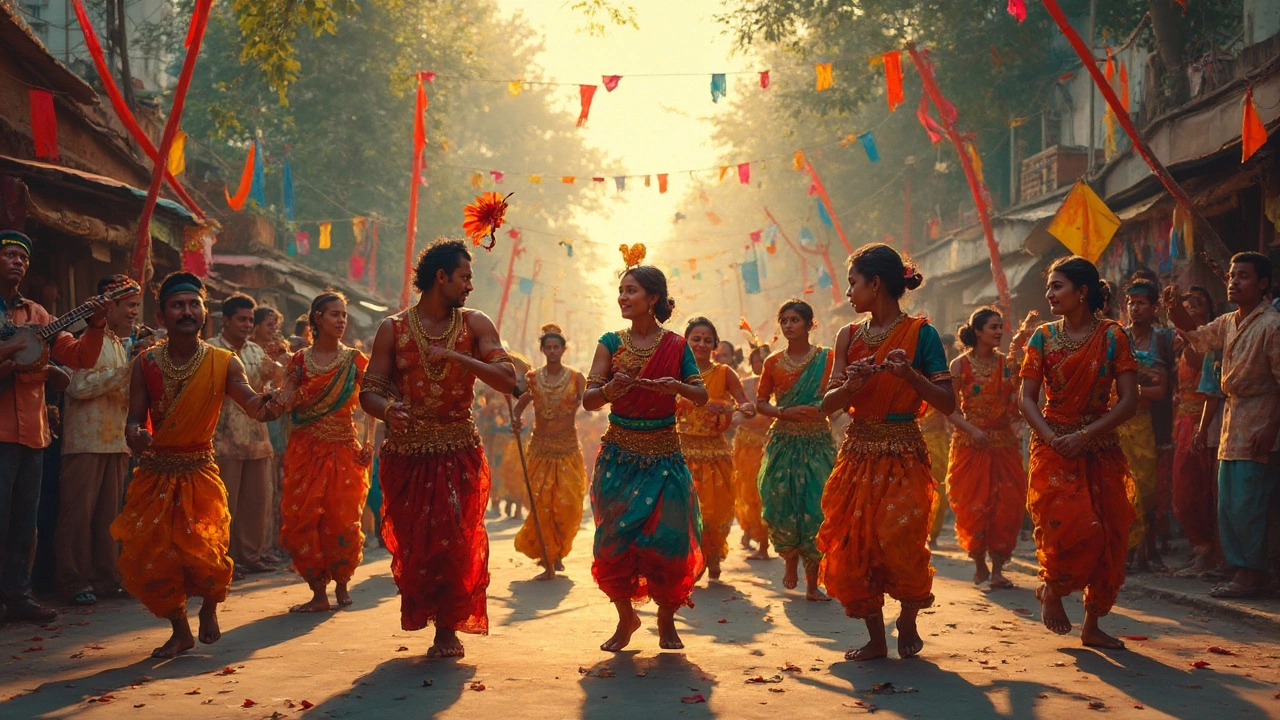Ever heard of Pohela Boishakh? It's the Bengali New Year and trust me, it’s more than just a date on the calendar in Bangladesh. Celebrations kick off with a bang, welcoming in the new year with an explosion of colors, sounds, and smells that you can’t get anywhere else.
This is when villages and cities alike come alive with music, dance, and art. Think about it as a time where tradition meets modernity, all packed into one vibrant day. Families gather, friends unite, and everyone’s out to just have a good time.
One thing you can't miss is the food. With every stall you pass by, there's a new treat begging you to try. Traditional Bengali foods like panta bhat and hilsa fish are on everyone’s list, offering a taste of history with every bite. And let's not forget the sweets!
- History of Pohela Boishakh
- Unique Traditions and Rituals
- Gastronomic Delights
- Impact on Local Communities
- Experiencing the Festival as a Visitor
History of Pohela Boishakh
Pohela Boishakh, the Bengali New Year, isn't just a celebration that popped up out of nowhere. It's got deep roots going way back to the Mughal empire. Big rulers like Emperor Akbar initiated the Bengali calendar to streamline tax collection, especially for farmers. Makes sense, right? A fresh year, a fresh start with crops, and settling dues.
Over time, this day wasn't just about taxes. It turned into an occasion for people to celebrate the harvest and usher in good fortune for the upcoming year. Villages started observing this day with fairs, music, and dance. The vibe wasn't just limited to the countryside though; it quickly spread to urban areas, evolving into the vibrant cultural festival we see today.
"Pohela Boishakh is more than a new date; it's a salute to our history and unity," remarked Professor Siddiqur Rahman of Dhaka University.
Another fun fact? This festival sees a unique mix of Hindu and Islamic traditions, emphasizing its inclusive nature. There are also links to ancient agricultural practices, reminding everyone of the cycle of seasons.
So yeah, Pohela Boishakh may have started with a ledger, but today it's a full-blown celebration of community, heritage, and hope for good times ahead!
Unique Traditions and Rituals
When it comes to Pohela Boishakh, the people of Bangladesh know how to keep traditions alive and kicking. This festival isn't just about partying—it's about honoring deep-rooted customs that have been passed down through generations.
One can't talk about Pohela Boishakh without mentioning the Mangal Shobhajatra. This massive parade happens on New Year's Day, organized by folks from the Faculty of Fine Arts at Dhaka University. The procession features colorful, larger-than-life paper-mache masks and sculptures. Each piece carries a social or political message, reflecting the year's concerns and hopes.
You'll also notice everyone wearing new clothes. Kids, adults, grandparents, you name it—they’re all in on the tradition of starting the year fresh, often in bright red and white outfits. These colors symbolize good luck and happiness for the coming year.
Another cool thing about this festival is starting the day with a delicious meal of panta bhat (fermented rice), hilsa fish, and various spicy sides. It’s a simple meal, but it's a vital tradition symbolizing a humble start to the new year and is enjoyed by families far and wide.
Throughout the day, expect a lot of music and dancing, especially the performance of songs by Rabindranath Tagore, a renowned Bengali poet. People gather in open spaces, community centers, and even streets to celebrate with traditional instruments playing upbeat tunes.
If you're lucky, you might catch a glimpse of other rituals like boat racing and bull racing in certain rural areas. These vibrant, energetic events show the deep cultural tapestry and community spirit of Bengali culture.

Gastronomic Delights
If you've got a love for food, then the ethnic festival in Bangladesh, especially during Pohela Boishakh, is a dream come true. This time of the year, the air is filled with the aroma of all kinds of mouthwatering dishes that are deeply rooted in Bengali culture.
Starting with panta bhat, a traditional fermented rice dish often served with fried hilsa fish, this simple yet satisfying meal is a staple during the festival. It's cool and refreshing, perfect for the hot climate.
For those with a sweet tooth, the festival doesn’t disappoint. Indulge in mishti doi, a sweet yogurt that’s creamy and rich—think of it as the Bengali twist on dessert. And then there’s roshogolla, those soft, spongy balls of sweet joy that no festival is complete without.
Gastronomic delights are not just about thrilling your taste buds; they're about tradition, a taste of history in every bite. Many of these dishes have been passed down generations, making each meal a connection to the past.
Besides these classics, you can find stalls lining the streets serving a plethora of local snacks. From puffed rice mixtures called jhal muri to crispy beguni, there’s something to satisfy every craving. Street food vendors are a highlight, bringing their A-game to make sure every visitor leaves with a full belly and a big smile.
During Pohela Boishakh, families also gather to prepare elaborate feasts at home. These meals are not only about enjoying delicious food but also about bringing everyone together around the table, sharing stories, laughter, and of course, the amazing flavors of Bengal.
Impact on Local Communities
The ethnic festival of Pohela Boishakh isn't just a splash of cultural pride, it's a big deal for local communities in Bangladesh. When the festivities start, it's like pressing reset on everyday life, giving everyone a chance to come together and celebrate their roots.
In rural areas, this festival is a major economic boost. Think about small businesses and local artisans who get a chance to showcase their crafts, from handmade jewelry to traditional outfits. During Pohela Boishakh, local markets swell with eager shoppers looking for something unique to wear or gift.
The vibe in urban areas like Dhaka totally shifts too. Streets fill up with parades and fairs where folks from diverse backgrounds mix, mingle, and share in the joy. It's a big reminder of the country's rich cultural blend, making everyone feel connected.
On the economic side, hotels and restaurants see a surge in business as both locals and tourists get in on the action. Community centers become hubs of activity, hosting events that range from concerts to art exhibitions. Plus, there's an uptick in seasonal jobs, providing work for many who might be struggling otherwise.
Interestingly, a survey last year showed that about 60% of small vendors made up to 50% of their annual income during this festival period. That’s a huge deal!
| Impact | Percentage |
|---|---|
| Small Vendor Income Boost | 50% |
| Local Business Participation | 75% |
| Tourism Increase | 30% |
The cultural celebrations also promote a sense of identity and belonging. It's a way for the current and next generations to learn and keep alive stories and traditions from the past. So, in more ways than one, Pohela Boishakh leaves a lasting mark on the hearts and lives of the local people.

Experiencing the Festival as a Visitor
If you're planning a trip to Bangladesh, timing your visit during the Pohela Boishakh can be an unforgettable experience. This festival is a great way to dive deep into the heart of Bengali culture and really see the vibrant traditions come to life.
When you first step into the streets, you'll be swept away by the festive atmosphere. Everyone is dressed in colorful traditional attire, making the whole scene look like a moving painting. Don't hesitate to join the crowd; you'll immediately feel like you're part of the celebration.
Amazing performances line the streets. Be sure to catch some local music and dance acts that showcase the region's cultural heritage. In Dhaka, you'll want to check out the Mangal Shobhajatra, a grand procession that’s as lively as it is meaningful. This UNESCO-recognized event embodies the spirits of peace and harmony.
"Pohela Boishakh isn't just a festival; it’s a celebration of life and renewal," says Ahsan Khaled, a cultural historian, in an interview with The Dhaka Times.
Food plays a huge part in any visit. Shilpacharya Zainul Abedin's museum takes it a step further with live cooking demonstrations. Must-try items? Panta Ilish and a selection of local sweets will do the trick. If you’re a foodie, you’re in for a treat!
Getting around is fairly easy. Public transportation, although crowded, is a good way to experience the local vibe. Hiring a rickshaw for short distances is a fun and authentic way to navigate through the bustling streets. It’s handy to carry some local currency for quick purchases, as vendors mainly deal in cash.
With a bit of planning and an open mind, visiting Bangladesh during the ethnic festival in April gives you a rich tapestry of cultural experiences, local flavors, and scenic memories that’ll stick with you long after you’ve left.
